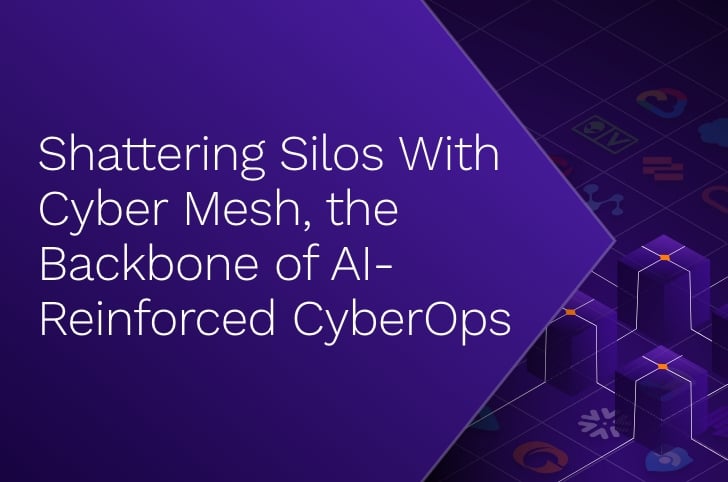- Why Securonix?
- Products
-
- Overview
- 'Bring Your Own' Deployment Models
-
- Products
-
- Solutions
-
- Monitoring the Cloud
- Cloud Security Monitoring
- Gain visibility to detect and respond to cloud threats.
- Amazon Web Services
- Achieve faster response to threats across AWS.
- Google Cloud Platform
- Improve detection and response across GCP.
- Microsoft Azure
- Expand security monitoring across Azure services.
- Microsoft 365
- Benefit from detection and response on Office 365.
-
- Featured Use Case
- Insider Threat
- Monitor and mitigate malicious and negligent users.
- NDR
- Analyze network events to detect and respond to advanced threats.
- EMR Monitoring
- Increase patient data privacy and prevent data snooping.
- MITRE ATT&CK
- Align alerts and analytics to the MITRE ATT&CK framework.
-
- Resources
- Partners
- Company
- Blog
SIEM
Welcome to the fourth installment of Tales from the SOC, where we delve into the digital horrors lurking in today’s cyberspace. In this story, we explore an incident that feels ripped straight out of a dystopian nightmare: an AI-powered army of “zombie” devices that took over the internet, sowing chaos and crippling some of the biggest names in tech. This is the terrifying true account of the Mirai botnet attack—a chilling example of how automated threats can resurrect old tactics with devastating new force.
The Prelude to Chaos
It all started innocuously enough in August 2016. A group of amateur hackers set out to exploit the growing number of Internet of Things (IoT) devices—everything from security cameras to home routers. Using an AI-powered malware strain known as Mirai, they transformed these devices into an army of unwitting “zombies,” forming one of the largest and most powerful botnets ever seen.
The Mirai malware was terrifyingly simple in its execution. By scanning the internet for vulnerable IoT devices, it exploited weak security—particularly default usernames and passwords left unchanged by users. Once a device was infected, it became part of the botnet, ready to follow the commands of its attackers. By the end of the campaign, hundreds of thousands of devices were under their control, waiting like a legion of undead, ready to strike at a moment’s notice.
The Attack Unfolds
The first major blow came on September 20, 2016, when Mirai unleashed a Distributed Denial of Service (DDoS) attack against KrebsOnSecurity, a cybersecurity news site run by prominent journalist Brian Krebs. The attack was massive, reaching a peak of 620 Gbps, one of the largest DDoS attacks ever recorded at that time. While Krebs’ site survived, thanks to Google’s Project Shield, it was clear that this attack was only the beginning.
Just one month later, on October 21, 2016, the Mirai botnet launched its most infamous attack, targeting Dyn, a major DNS provider. Like a swarm of AI-powered zombies, millions of infected IoT devices bombarded Dyn’s servers with junk traffic, overwhelming their systems and bringing down major portions of the internet across the U.S. The attack crippled popular websites, including Twitter, Amazon, Netflix, Reddit, and Spotify, among others, causing widespread panic as users across the country experienced outages.
Unlike many attacks motivated by financial gain, Mirai’s intent seemed to be pure destruction—unleashing chaos for the sake of chaos. The attackers knew that the weak security of IoT devices made them easy prey, and by coordinating an army of compromised machines, they showed how automated threats can scale in ways previously thought unimaginable.
Economic Impact of the Mirai Botnet Attack
The Mirai botnet’s devastating attack didn’t just cause short-term internet outages—it had a much broader and longer-lasting economic impact. The sheer scope of disruption affected millions of users, e-commerce businesses, and digital services, leading to substantial financial losses.
For businesses that rely heavily on internet availability, such as streaming platforms, e-commerce giants, and social media, even an hour of downtime can result in millions of dollars in lost revenue. During the Dyn attack, outages lasted for several hours, affecting numerous high-traffic websites. It is estimated that the economic damage caused by this incident exceeded $110 million in the form of lost business, operational disruptions, and remediation efforts.
Moreover, the attack exposed the vulnerabilities inherent in the growing IoT ecosystem. Suddenly, companies had to reevaluate the security of devices that were once considered trivial—everything from smart thermostats to home security systems became potential entry points for cyberattacks. This realization spurred a push for stronger IoT security standards and led to increased scrutiny from regulators. The Mirai attack also contributed to a greater awareness of the risks of using default credentials and the need for regular device updates and patches.
The Zombie Army’s Rise
While Mirai marked a major milestone in the history of botnets, its impact didn’t end with the Dyn attack. Variants of the Mirai malware began to surface across the dark web, each more sophisticated than the last. Cybercriminals modified the original code to create their own botnets, exploiting new vulnerabilities in IoT devices and targeting everything from telecommunications networks to critical infrastructure.
The rise of these AI-powered botnets signaled a terrifying new era in cyberwarfare—one where attacks could be launched at unprecedented speed and scale with minimal human intervention. It was as if the attackers had summoned a horde of AI-zombies, capable of overwhelming systems with relentless, automated precision.
Lessons Learned from the Attack
The Mirai botnet attack taught us that, much like in a classic zombie film, a seemingly innocuous weakness can lead to overwhelming destruction. IoT devices, often overlooked in terms of security, can become the very source of widespread attacks if left unprotected. Here are some key lessons to help fortify defenses against the next wave of automated threats:
- Harden IoT Security: Ensure that all IoT devices are secured with strong, unique passwords and that default credentials are changed upon installation. Regularly update firmware and apply patches to fix known vulnerabilities.
- Network Segmentation: Segregate IoT devices from core network infrastructure, much like building a fortress with secure, isolated chambers. This can limit the spread of malware if an IoT device is compromised.
- Automated Threat Detection: Use advanced threat detection and UEBA tools that can identify and respond to unusual network traffic patterns in real-time. Automated threats, like the Mirai botnet, strike fast—your defense mechanisms need to be even faster.
- Proactive DDoS Protection: Organizations must implement DDoS mitigation strategies, such as load balancing and rate limiting, to minimize the impact of future botnet-driven attacks.
The Aftermath
The Mirai botnet served as a wake-up call for the tech industry, showing just how vulnerable the expanding IoT ecosystem truly is. The attack prompted both private companies and government bodies to take IoT security more seriously, leading to a wave of new cybersecurity initiatives aimed at strengthening defenses against automated threats.
Despite several arrests related to the Mirai botnet’s creators, its legacy lives on. Variants of Mirai continue to appear, adapting and evolving just like the AI-zombies they were inspired by. The lesson is clear: the threats of the past are never truly gone—they simply rise again in more advanced and terrifying forms.
As the world continues to connect more devices to the internet, the potential for future botnets grows. The Mirai botnet may have been one of the first to show the power of automated threats, but it certainly won’t be the last. Like the undead, these threats will keep coming, and it’s up to us to be ready when they do.






